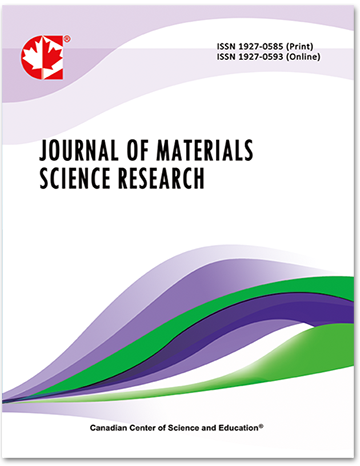An Improved Model for Estimation of Mechanical Properties of Polymer-Clay Nano-Composites
- Abdulhamid A. Al-Abduljabbar
Abstract
Polymer-clay nanocomposites are more popular in many industries and applications due to improved mechanical and gas barrier properties over pure polymers and classical polymer-based composites. The mechanism by which clay platelets, with thicknesses in the nanometer range, as opposed to the hundred-nanometer range in the other two dimensions, introduce the mechanical and other properties improvement can be attributed to their high efficiency in creating discontinuities to flows through the bulk matrix polymer material. However, the extent of this improvement depends on the success of separation or achieving full exfoliation of the clay platelets through the bulk matrix. Since such full exfoliation is not achievable experimentally, the aspect ratio of the filler particles is not a simple value that mathematical models employ to describe mechanical properties. In this work, a modification is proposed to improve such models by using relationships utilizing different concentrations of varying filler platelets thicknesses. The improvements in elastic tensile modulus are discussed with consideration of the effect of clay platelet inclusions geometry as depicted through the proposed modification to considered models to capture the effect of nano-platelets on the properties of the composite.
- Full Text:
 PDF
PDF
- DOI:10.5539/jmsr.v12n1p1
Journal Metrics
Impact Factor 2022 (by WJCI): 0.583
Google-based Impact Factor (2021): 0.52
h-index (December 2021): 22
i10-index (December 2021): 74
h5-index (December 2021): N/A
h5-median (December 2021): N/A
Index
- CAS (American Chemical Society)
- CNKI Scholar
- Elektronische Zeitschriftenbibliothek (EZB)
- EuroPub Database
- Excellence in Research for Australia (ERA)
- Google Scholar
- Infotrieve
- JournalTOCs
- LOCKSS
- NewJour
- PKP Open Archives Harvester
- Qualis/CAPES
- SHERPA/RoMEO
- Standard Periodical Directory
- Universe Digital Library
- WJCI Report
- WorldCat
Contact
- John MartinEditorial Assistant
- jmsr@ccsenet.org
